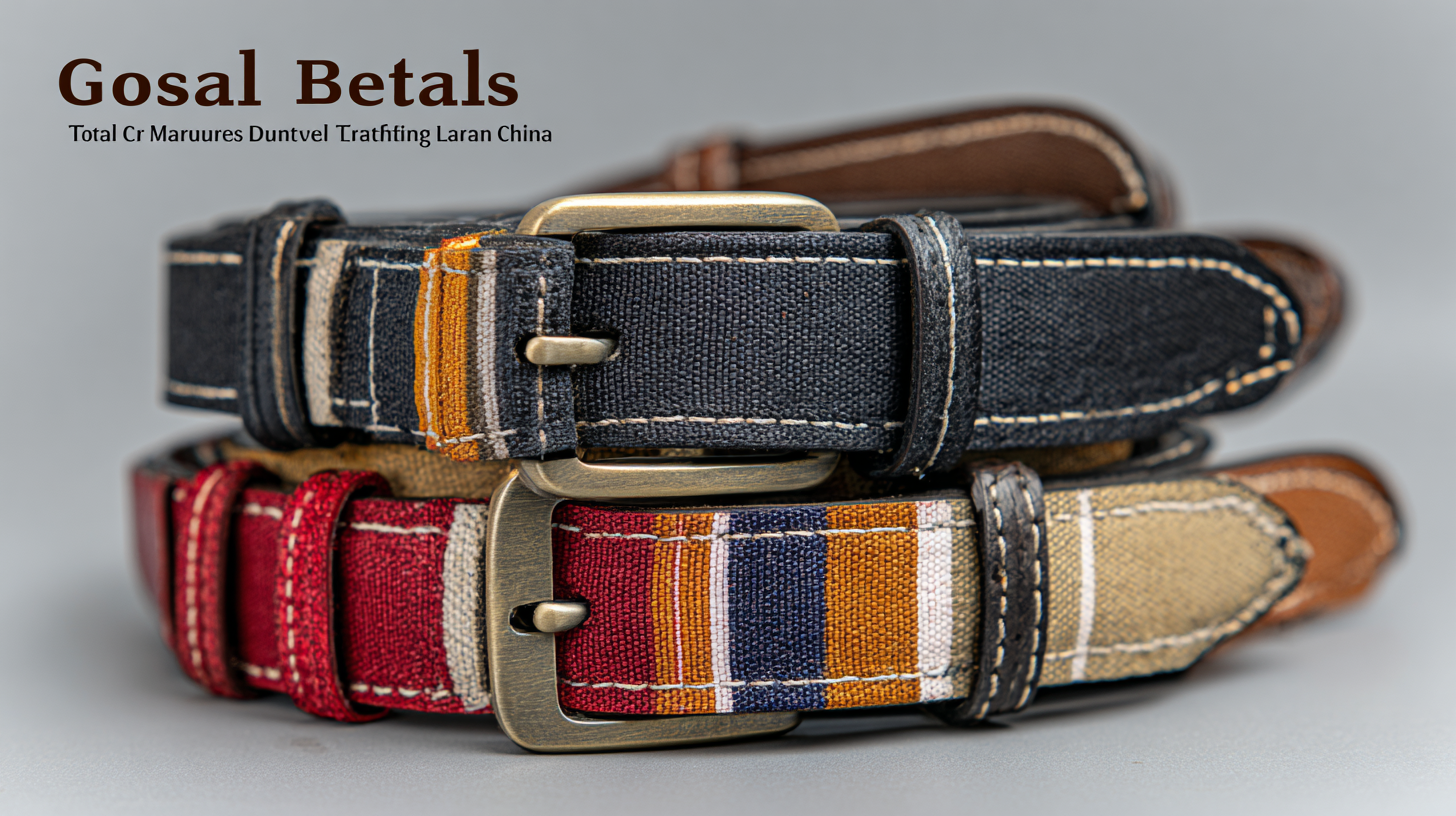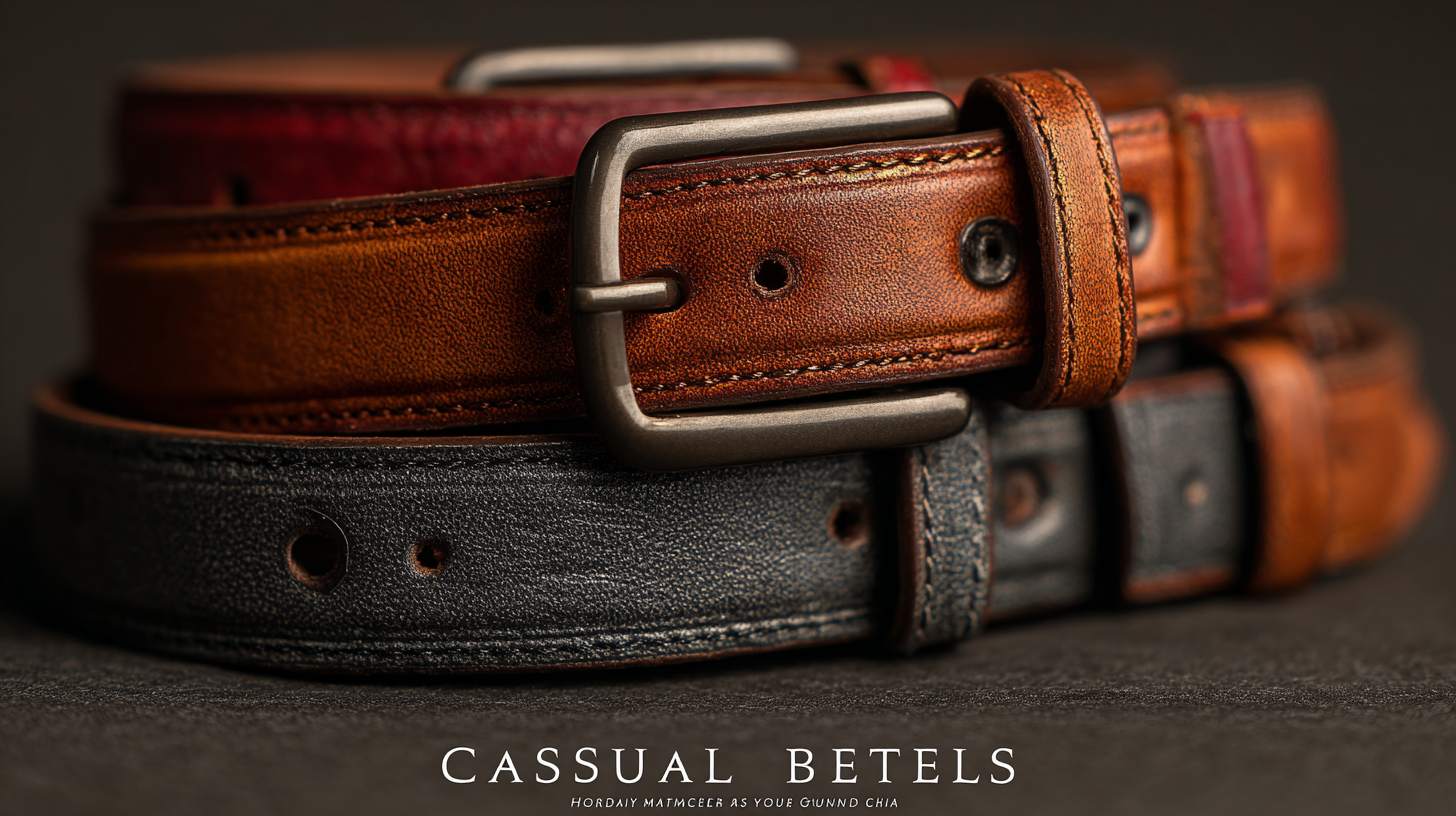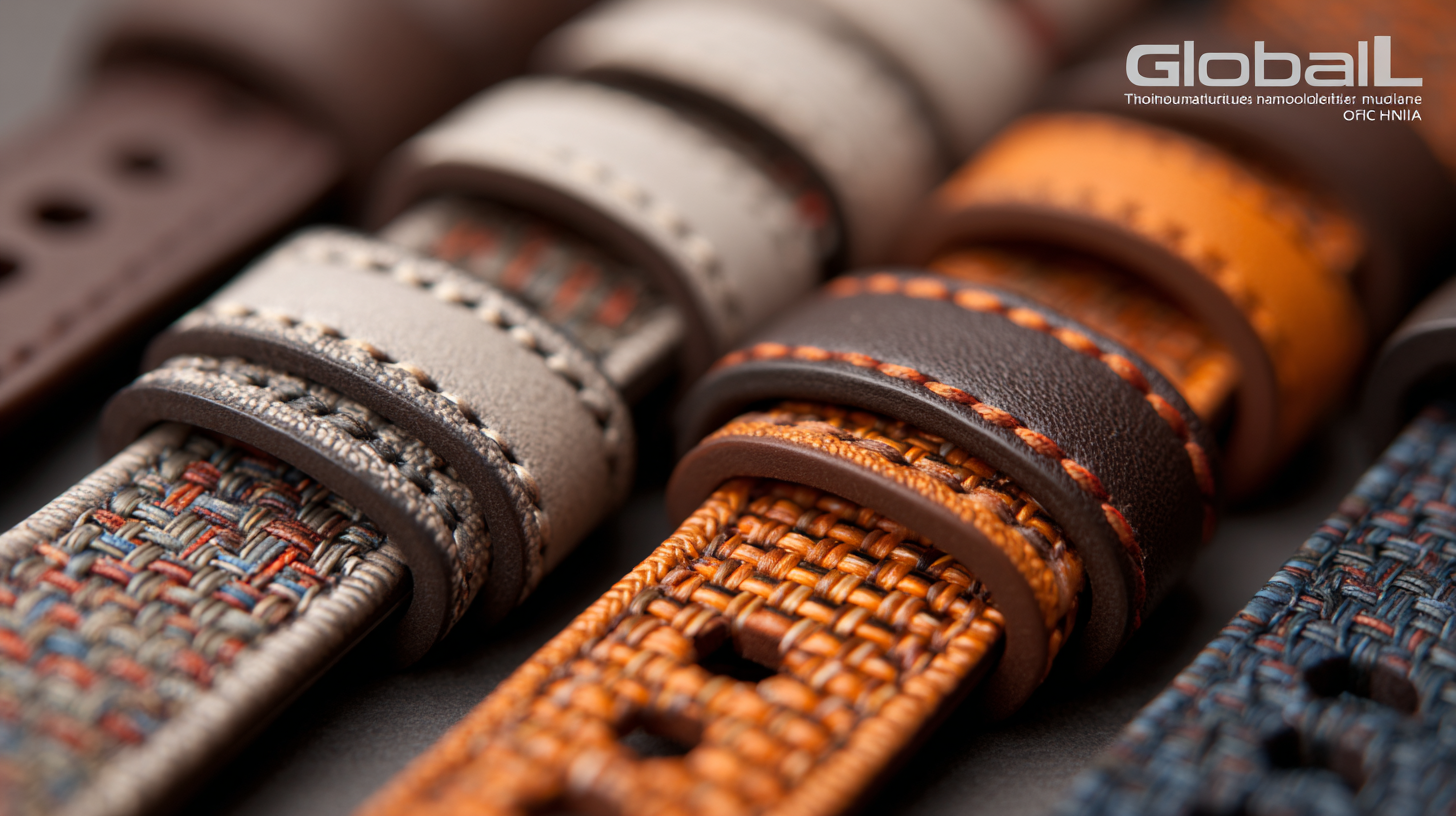Global Leaders in Manufacturing Discover Top Quality Casual Belts Made in China
In recent years, the global casual belt market has witnessed significant growth, driven by shifting consumer preferences and the rising demand for stylish yet functional accessories. According to a report by Market Research Future, the global accessories market, which includes casual belts, is expected to reach $60 billion by 2025, growing at a CAGR of approximately 5%. As a result, manufacturers, especially those based in China, are capitalizing on this trend by delivering top-quality casual belts that combine durability with contemporary design. With companies increasingly focusing on sustainable practices and innovative production methods, the competition among global leaders in manufacturing has intensified. This blog post will explore the top strategies that have allowed these manufacturers to excel in the casual belt segment, as well as the critical role played by quality and branding in capturing market share.

The Rise of Casual Belts: A Look at China's Manufacturing Excellence
As the demand for casual wear continues to rise globally, casual belts have emerged as a significant accessory that complements modern fashion. According to a recent report from Grand View Research, the global belt market size is expected to reach USD 45.8 billion by 2025, driven largely by an increasing preference for casual and comfortable apparel. This shift presents a unique opportunity for China, a country renowned for its manufacturing capabilities and efficient supply chains.
China's expertise in manufacturing casual belts is underscored by its ability to produce high-quality materials at competitive prices. Data from the China National Textile and Apparel Council reveals that the country accounted for over 32% of the world’s textile exports in 2022. This dominance is bolstered by innovative production techniques and a robust workforce, ensuring that manufacturers can quickly adapt to changing fashion trends. The rise of e-commerce further amplifies this growth, with platforms like Alibaba and JD.com facilitating easier access to a variety of options for international buyers.
Moreover, the focus on sustainable manufacturing practices is shaping the future of casual belt production in China. A report from the World Economic Forum highlights that nearly 75% of consumers are willing to pay more for sustainable products. In response, many Chinese manufacturers are integrating eco-friendly materials and practices into their production processes, appealing to the environmentally conscious consumer. This alignment with global market demands showcases China’s commitment to maintaining its status as a leader in the casual fashion accessories sector.
Understanding the Quality Assurance Processes in Chinese Belt Production
In the realm of global manufacturing, quality assurance is paramount, especially in the production of casual belts in China. As leaders in the industry navigate the complexities of sourcing quality accessories, understanding the rigorous quality assurance processes in Chinese belt production becomes essential. The manufacturers employ a comprehensive approach, integrating stringent checks at every stage of production, from selecting raw materials to the final inspection before shipment.
A critical aspect of this quality assurance is the utilization of advanced technology and skilled craftsmanship. Factories often employ state-of-the-art machinery for precision cutting, stitching, and finishing, all while adhering to international quality standards. Additionally, experienced artisans contribute their expertise, ensuring that each belt not only meets design specifications but also endures the tests of daily wear and tear. By fostering a culture of continuous improvement, Chinese manufacturers are dedicated to enhancing product quality, which ultimately solidifies their reputation in the global market.

Key Features to Consider When Choosing Casual Belts from China
When choosing casual belts from China, several key features should be considered to ensure both quality and style. First and foremost, the material used in the belt construction plays a critical role in durability and appearance. Leather remains a preferred choice due to its longevity and timeless appeal, with reports indicating that genuine leather belts can last up to 10 years with proper care. Additionally, synthetic materials are increasingly popular for their cost-effectiveness and ability to mimic the look of leather while being easier to maintain.
Another important factor is the manufacturing standards. Many brands in China now adhere to international quality certifications, which means that they meet stringent production guidelines that guarantee a superior product. For instance, a report from the China Leather Industry Association states that the country has improved its manufacturing processes over the years, leading to a 20% increase in exports of high-quality leather goods. Furthermore, style and versatility are crucial; belts that can seamlessly transition from casual to more formal settings are particularly sought after in today’s fashion-conscious market. As global leaders in manufacturing discover the rich variety of options available, being informed about these key features can lead to better purchasing decisions.
The Impact of Global Trade on Casual Belt Trends and Availability
As global trade continues to evolve, the availability and trends surrounding casual belts, particularly those made in China, play a significant role in the fashion industry. The shift in consumer behavior toward comfort and versatility has created a surge in demand for casual wear, further emphasizing the importance of quality accessories like belts. Manufacturers in China have responded by producing a wide variety of options that meet the changing needs of today's consumers. This adaptability highlights how global supply chains can effectively pivot in response to emerging trends.
Moreover, with economic uncertainty looming over the global fashion market, brands are compelled to explore innovative ways to navigate challenges. The increasing popularity of casual styles, spurred by the pandemic's impact on office attire, demonstrates a broader societal shift towards practicality. Belts, once considered merely functional, are now becoming statement pieces that reflect personal style, thereby influencing their design and production. This trend underscores the intricate connection between global trade dynamics and the evolving tastes of consumers, ultimately shaping the market for casual belts.

How Chinese Manufacturers Are Innovating in Casual Belt Design and Materials
In recent years, Chinese manufacturers have been at the forefront of innovation in casual belt design and materials, redefining what consumers expect from everyday accessories. With an emphasis on quality, style, and function, these manufacturers are experimenting with new materials such as sustainable leather alternatives and advanced synthetic fabrics. This shift not only enhances durability but also caters to environmentally conscious consumers seeking stylish yet sustainable choices.
When selecting a casual belt, look for versatility in design. A belt that can seamlessly transition from casual outings to more formal settings will maximize your wardrobe options. Additionally, pay attention to craftsmanship; well-stitched seams and high-quality buckles can greatly impact the longevity of the belt. Finally, consider the weight of the belt material, as a lightweight option can provide comfort without compromising on style.
As the market continues to evolve, Chinese manufacturers are integrating cutting-edge technology into their production processes. This includes the use of 3D printing to create intricate buckle designs and customizable belt lengths, offering consumers a personalized experience. Whether you're seeking a belt that makes a statement or one that blends into your outfit, the innovation coming from China ensures that there are options for every individual style preference.
